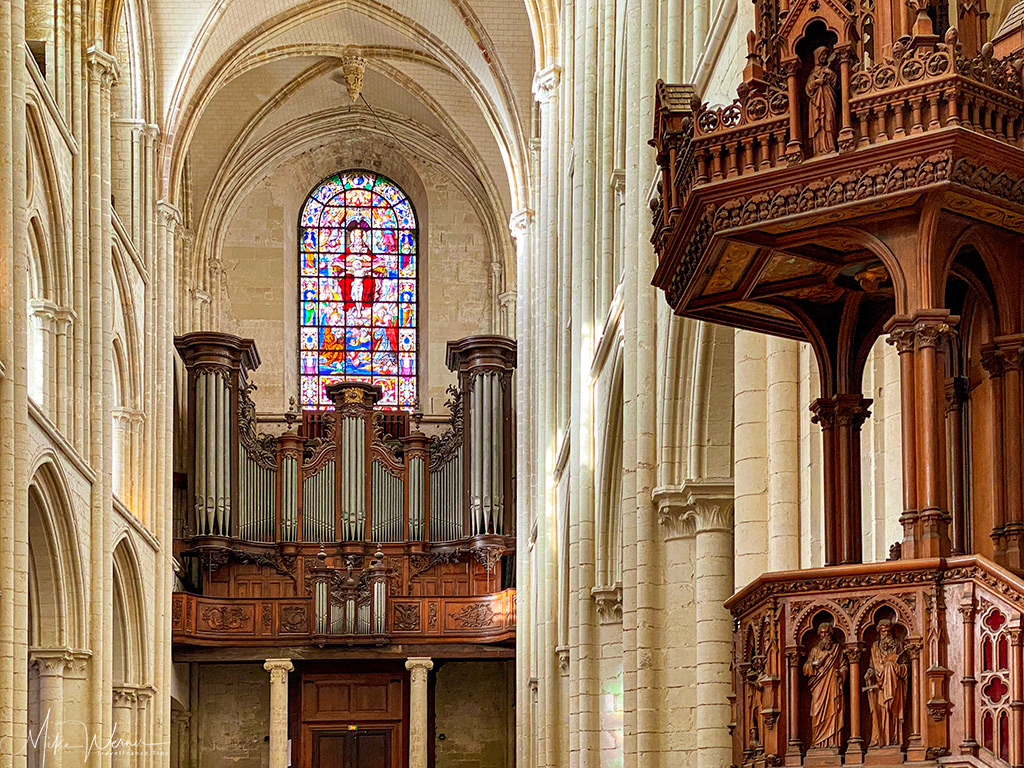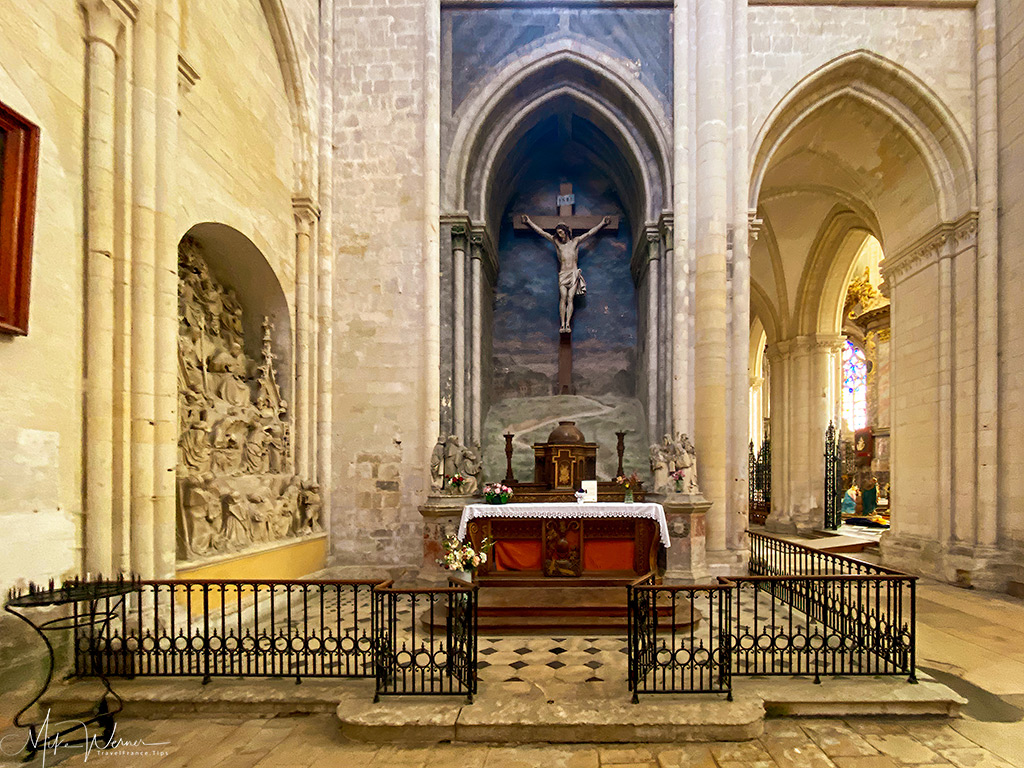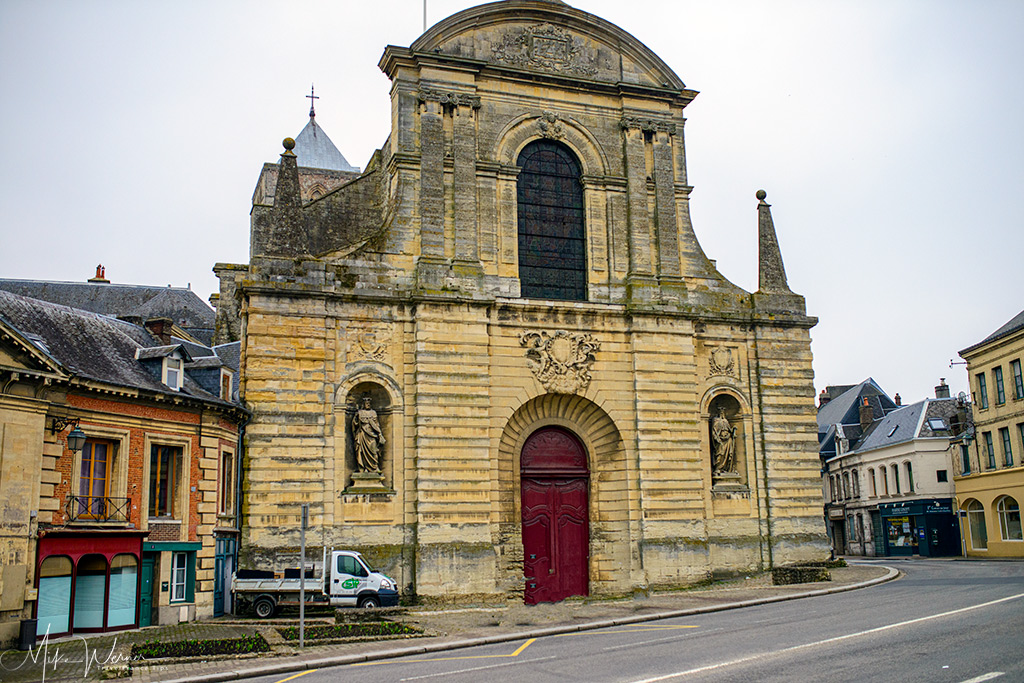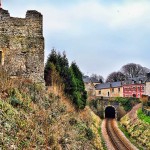The building of the Trinity Abbey church of Fecamp started back in the year 658 (no, there’s not a digit missing)! After several Viking raids and partial destruction of the abbey, Duke Richard I rebuilt the church.
It was Duke Richard II who made the Abbey part of the Benedictine order in the year 1001.
NOTE: Click here to read more about the Benedictine Palace & Factory of Fecamp.
The church is 127 meters long making it rather special in the Normandy landscape. It’s longer than most churches in Normandy.
Outside, just across the street you’ll see the ruins of the Ducal Palace/Castle. Click here to read more about it on our site.
Built against the Abbey is the Fecamp City Hall:
The main organ was built in the 11th century and still works today. The second organ was built in 1746 in the Montivilliers Abbey and moved here in 1803.
 The Trinity Abbey main organ
The Trinity Abbey main organ The Trinity Abbey main organ and its stained glass window
The Trinity Abbey main organ and its stained glass windowThe pulpit is well present and very ornate:
The abbey, over time, went from a single level structure to 3 levels. Once inside the church you can see the different levels:
Inside, alongside the outer walls you will find rather wide paths used to circulate between the nave and the altar and many chapels and prayer places.
The Chancel is quite well decorated while the altar itself doesn’t pale compared to other ones, even those in the Vatican.
There are a few statues, but not as many as in other catholic churches. The statue of the Virgin and her Child dates back to the 17th century:
There’s a monument to the departed on the left of the church, but no explanation who they are, or why it’s there. The few dates mentioned are not for any of the World Wars:
A little bit further you’ll find the “The Dormition of the Virgin“:
The stained glass windows are a mixture of new and old. Windows that were destroyed over the centuries have been replaced by newer ones:
You can still see several old stained glass windows in some of the chapels, notably the “Chapel of the Virgin” with its 13th century window. The Saint Andrew chapel has a stained glass window dating back to 1450. You can see them in the next section (The Chapels)
The Trinity Abbey has several chapels built over the centuries. The styles differ from one to the other. In the 16th century all the chapels were closed in.
The Chapels
Here are several of the chapels you can see in the Trinity Abbey (you’ll see some of the older stained glass windows in several of the photos):
 The Calvary Chapel of the Trinity Abbey of Fecamp
The Calvary Chapel of the Trinity Abbey of Fecamp Chapel of our Lady of the Trinity Abbey of Fecamp
Chapel of our Lady of the Trinity Abbey of Fecamp Chapel of our Lady of the Trinity Abbey of Fecamp
Chapel of our Lady of the Trinity Abbey of Fecamp Chapel of the Patron Saints or Relic Saints of the Trinity Abbey of Fecamp
Chapel of the Patron Saints or Relic Saints of the Trinity Abbey of Fecamp Chapel of the Virgin of the Trinity Abbey of Fecamp
Chapel of the Virgin of the Trinity Abbey of Fecamp Saint Clair Chapel of the Trinity Abbey of Fecamp
Saint Clair Chapel of the Trinity Abbey of Fecamp Saint Joseph Chapel of the Trinity Abbey of Fecamp
Saint Joseph Chapel of the Trinity Abbey of Fecamp Saint Nicholas Chapel of the Trinity Abbey of Fecamp
Saint Nicholas Chapel of the Trinity Abbey of Fecamp Saint Peter and Saint Paul Chapel of the Trinity Abbey of Fecamp
Saint Peter and Saint Paul Chapel of the Trinity Abbey of Fecamp Saint Guillaume Chapel of the Trinity Abbey of Fecamp
Saint Guillaume Chapel of the Trinity Abbey of Fecamp Chapel of the Fonts of the Trinity Abbey of Fecamp
Chapel of the Fonts of the Trinity Abbey of Fecamp Chapel of the Fonts of the Trinity Abbey of Fecamp”
Chapel of the Fonts of the Trinity Abbey of Fecamp” Saint Peter Chapel of the Trinity Abbey of Fecamp
Saint Peter Chapel of the Trinity Abbey of FecampConclusion
A visit to the Trinity Abbey is a worthwhile visit if you are in the area. Guided tours are available in several languages.
Click here to read more about it and find out when it’s open and how much it will cost you.
Related Posts
- 10000
- 10000
- 10000
- 10000
- 10000















